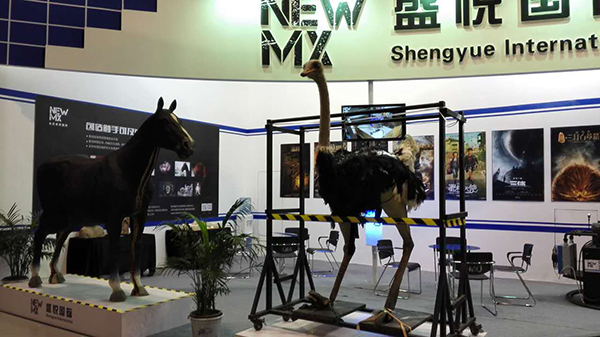In a typical battle scene of an epic movie, the audience may be filled with wonder on how the film’s production crew gathered what appears to be thousands of horse-mounted soldiers.
How they were able to assemble and direct such a large number of individuals--not to mention, horses--may have fingers pointing at the visual effects team.
Visitors at the 2015 China 3D Technology & Creative Expo could have finally found explanations to some things that would commonly astonish them as moviegoers.
Motion capture technology and 3D-printed film props were among the many highlights of the expo, reported China Daily.
Vicon, a motion capture company with offices in California and Colorado, U.S.A. and in Oxford, United Kingdom, defines motion capture or “mocap” as “the process of recording the movement of objects or people.”
In one scene in Guan Hu’s action-comedy, “Mr. Six,” which stars Feng Xiaogang and to be released in the country in December, an ostrich runs along a street in Beijing.
To shoot the said scene, a person wore a green animal costume and ran, and the visual effects team transformed the person into a real running ostrich onscreen.
In the expo, one booth displayed a 2-meter-tall ostrich prop with a hole in its belly.
Film crews also use remote-controlled artificial stand-ins when shooting scenes requiring the use of animals.
The event also featured other cutting-edge technology widely used in digital cinema.
The expo was one of the 10 sessions in the 10th China International Culture and Creative Industry Expo (ICCIE) held in Beijing from Oct. 29 to Nov. 1.
Yu Haibo, the deputy director of the Organizing Committee Office of ICCIE and vice chairman of China Council for the Promotion of International Trade (CCPIT) Beijing Sub-Council, referred to the sessions as “creative activities” in the news briefing published on the official website of ICCIE on Oct. 28.
The Ministry of Culture; the General Administration of Press, Publication, Radio, Film and Television (GAPP); and the Beijing Municipal People’s Government hosted the exposition.
The CCPIT Beijing Sub-Council, also known as China Chamber of International Commerce Beijing Chamber of Commerce (CCOIC Beijing) and founded in 1978, organized the expo.



























